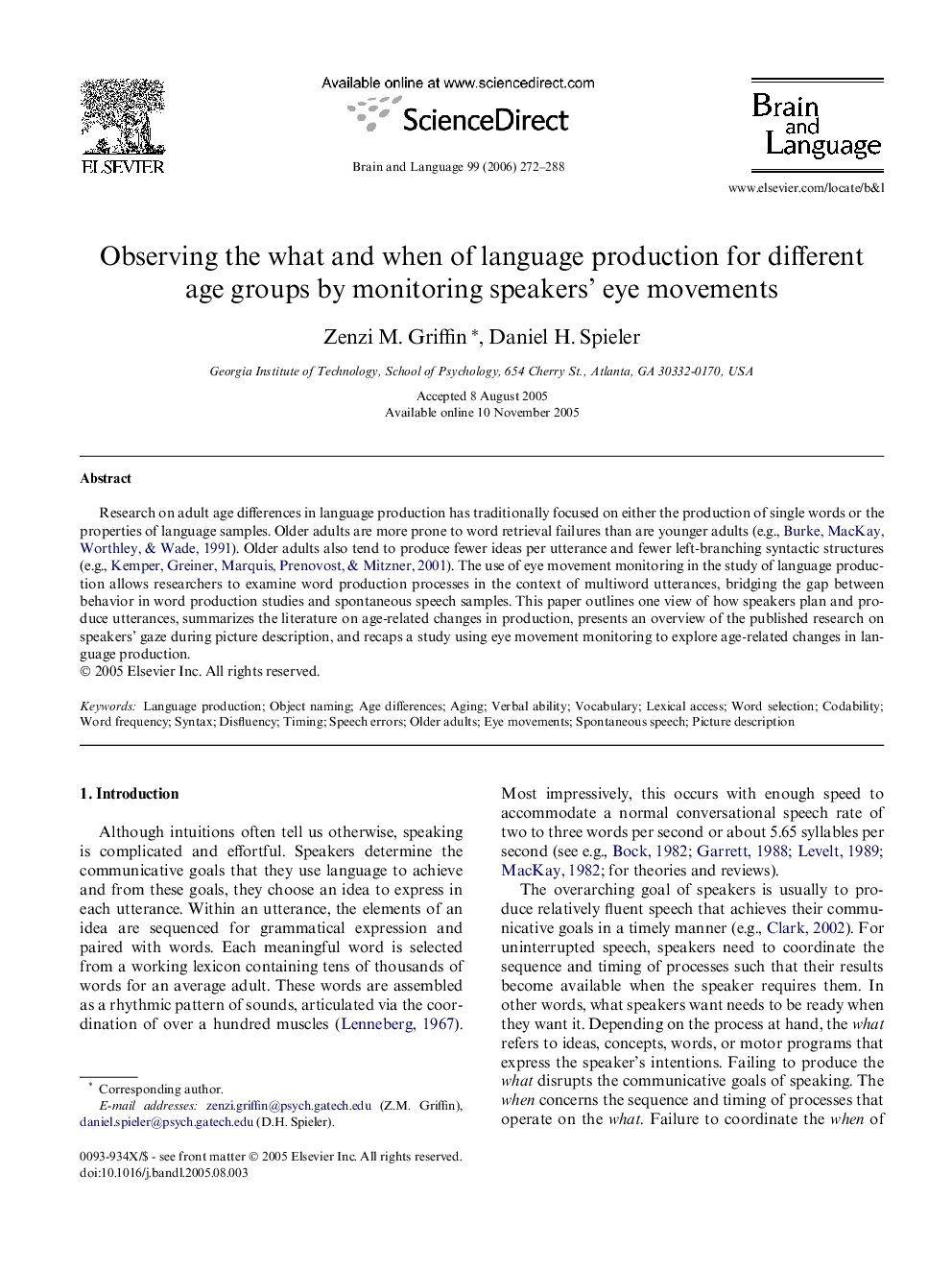| Article ID | Journal | Published Year | Pages | File Type |
|---|---|---|---|---|
| 925883 | Brain and Language | 2006 | 17 Pages |
Research on adult age differences in language production has traditionally focused on either the production of single words or the properties of language samples. Older adults are more prone to word retrieval failures than are younger adults (e.g., Burke, MacKay, Worthley, & Wade, 1991). Older adults also tend to produce fewer ideas per utterance and fewer left-branching syntactic structures (e.g., Kemper, Greiner, Marquis, Prenovost, & Mitzner, 2001). The use of eye movement monitoring in the study of language production allows researchers to examine word production processes in the context of multiword utterances, bridging the gap between behavior in word production studies and spontaneous speech samples. This paper outlines one view of how speakers plan and produce utterances, summarizes the literature on age-related changes in production, presents an overview of the published research on speakers’ gaze during picture description, and recaps a study using eye movement monitoring to explore age-related changes in language production.
